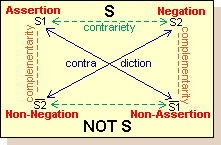
Introduction: Technology and Subjectivity
Technical modalities cannot tolerate subjectivity. Jacques Ellul, The Technological Society (Vintage, 1964), p. 431.
In the final chapter of The Technological Society, Ellul insisted on a fundamental opposition between the human being as non-technical subject and the dehumanized being who becomes the "total object" of technique(s). We'll begin today's class by juxtaposing Ellul's argument (on pp. 430-431) with Hayles' perspective on the posthuman, and discuss how/whether Hayles' view "rescues" the subject.
Hayles' How We Became Posthuman
We'll move on to chapter 2 of Hayles, and begin our discussion with Olivia's comments and questions. We'll then move to the later chapters of the book, and discuss what Hayles means when she writes:
Located within the dialectic of pattern/randomness and grounded in embodied actuality rather than disembodied information, the posthuman offers resources for rethinking the articulation of humans with intelligent machines. (287)
The "Semiotic Square" and Hayles' "The Semiotics of Virtuality"
If time permits, we can augment our discussion with an aside about the technique used by Hayles in chapter 10 called the "semiotic square."
The "semiotic square" was a creation of the famous semiotician A. J. Greimas, but anyone familiar with "logical squares" or "Latin squares" won't be surprised by the use of such a simple geometric structure to stimulate thinking. In chapter 10, Hayles uses the semiotic square to great effect in trying to expose some of the hidden connections and contrasts that come from thinking about the actual and the virtual. As an introduction to that chapter, we'll make a simple example of the usefulness/mechanism of the semiotic square. (For a very nice introduction to this and other fundamental notions in semiotics I recommend the online version of Daniel Chandler's Semiotics for Beginners. -- the image of the square, below, is part of his book).

Let's see how this works with some of the oppositions which have characterized the readings we've done this semester (e.g. human and machine, or craft and technique).
For Next Time: Finish the excerpt from Jean-Francois Lyotard's The Postmodern Condition, Jean Baudrillard's short essay "Disneyworld Company", and, if you have the time, Bill Joy's essay "Why the Future Doesn't Need Us".